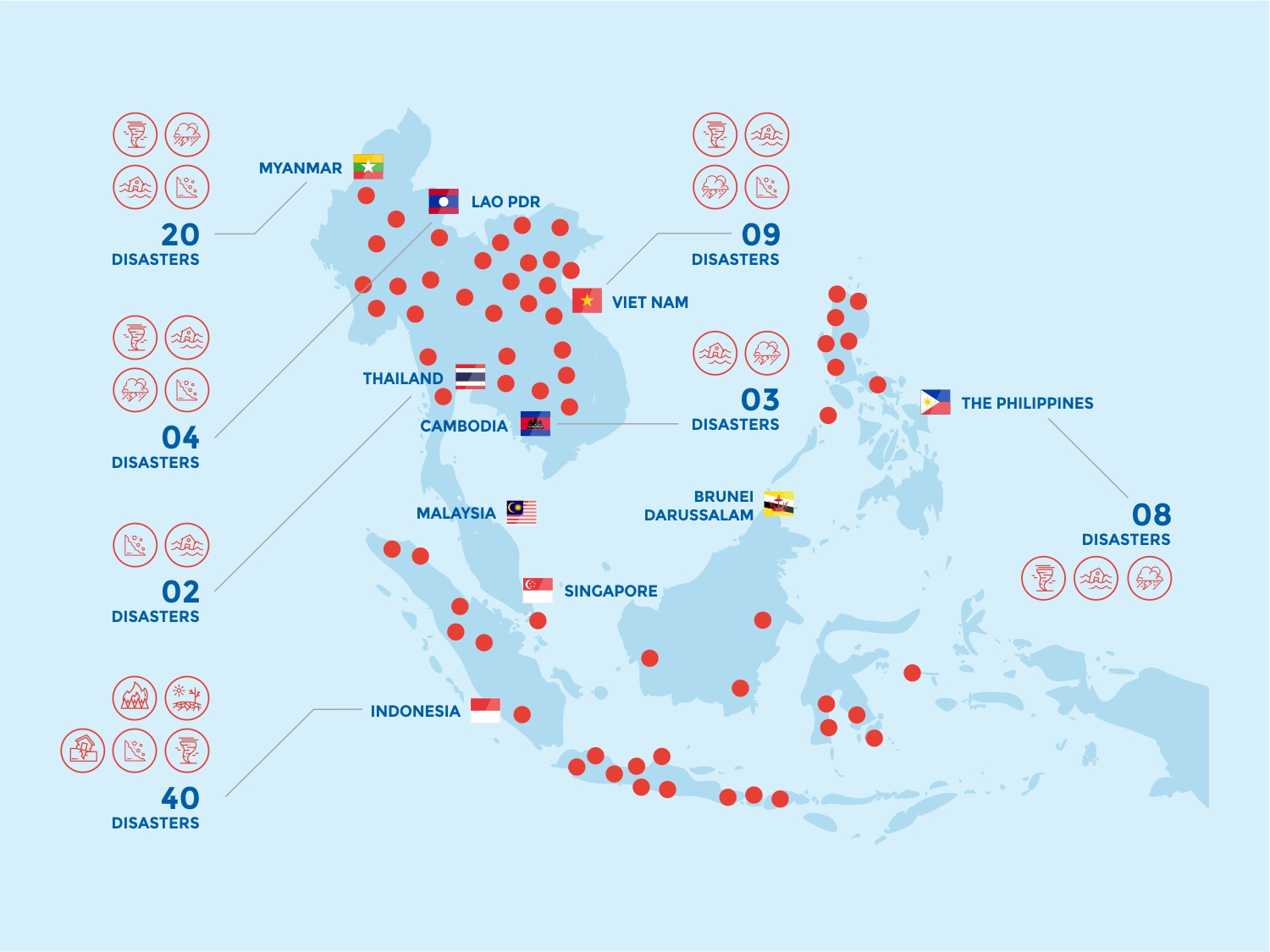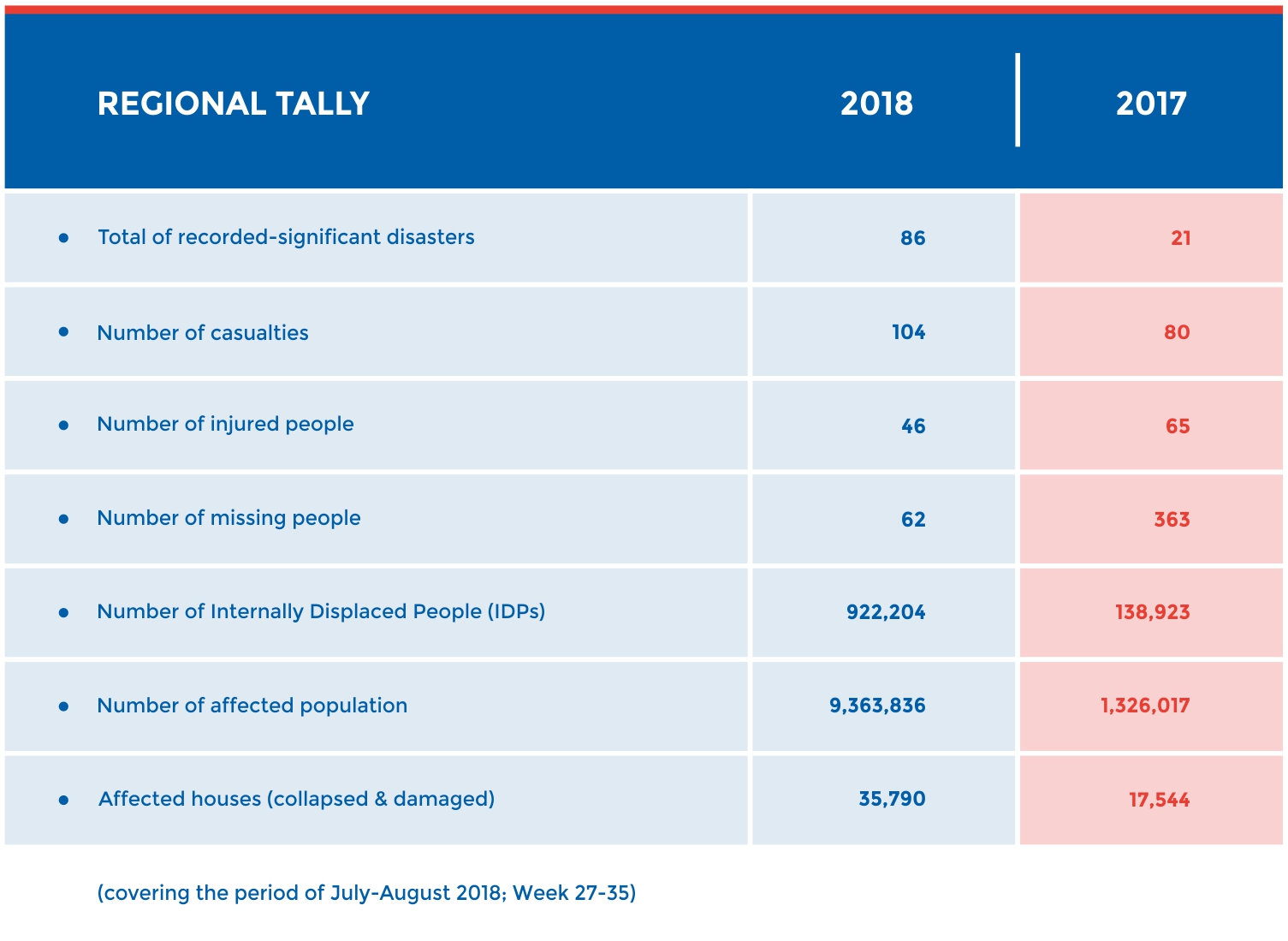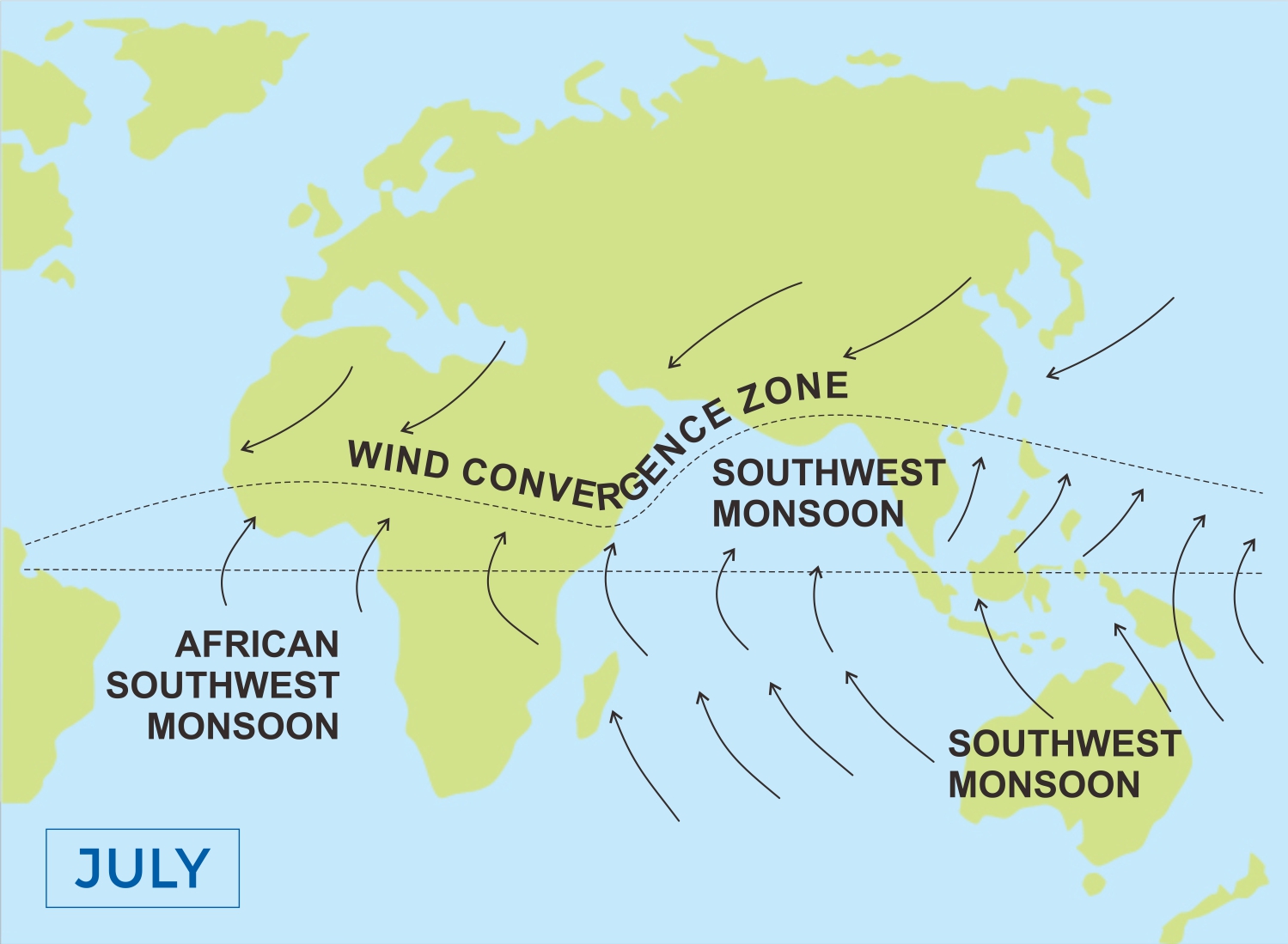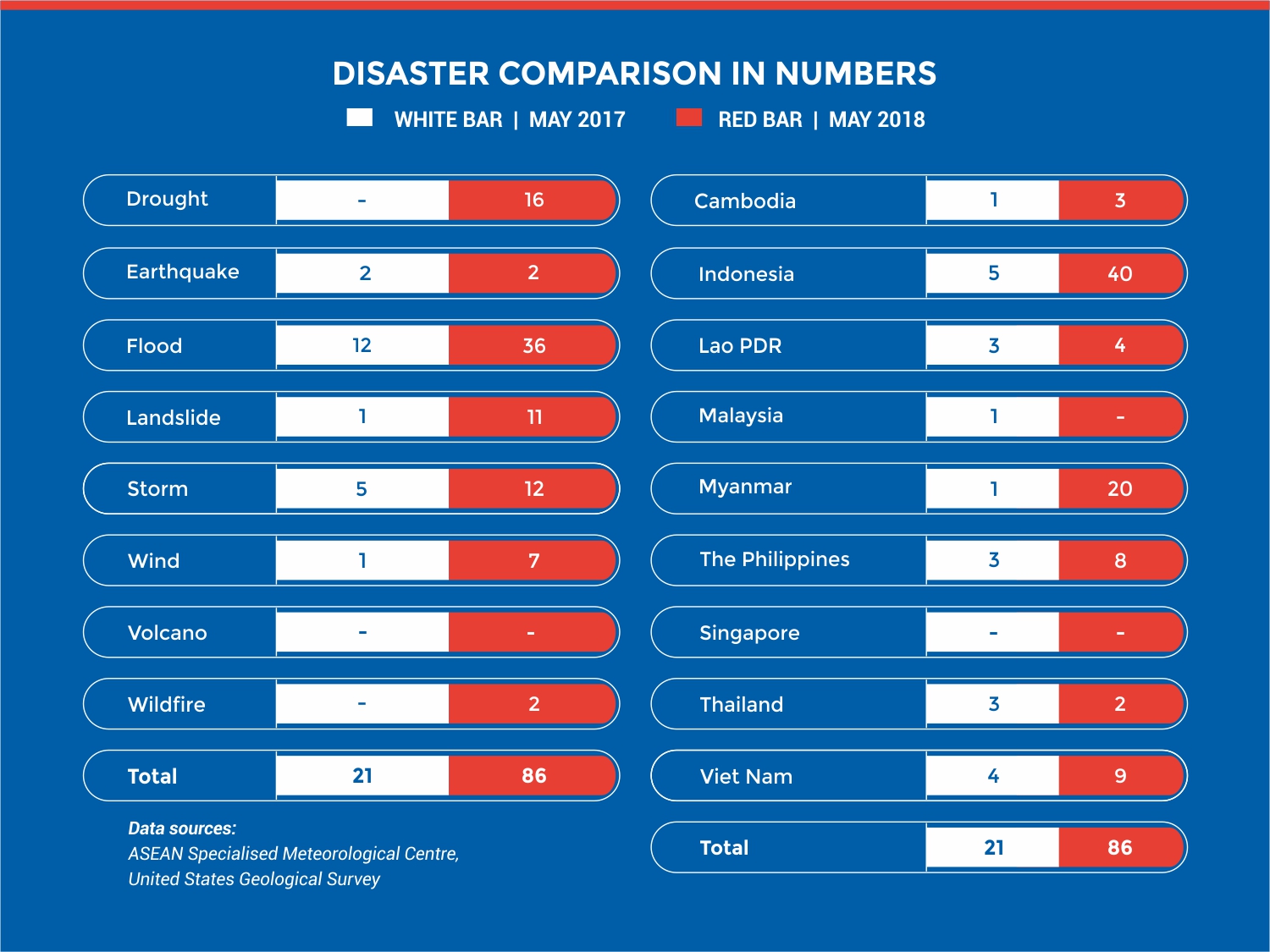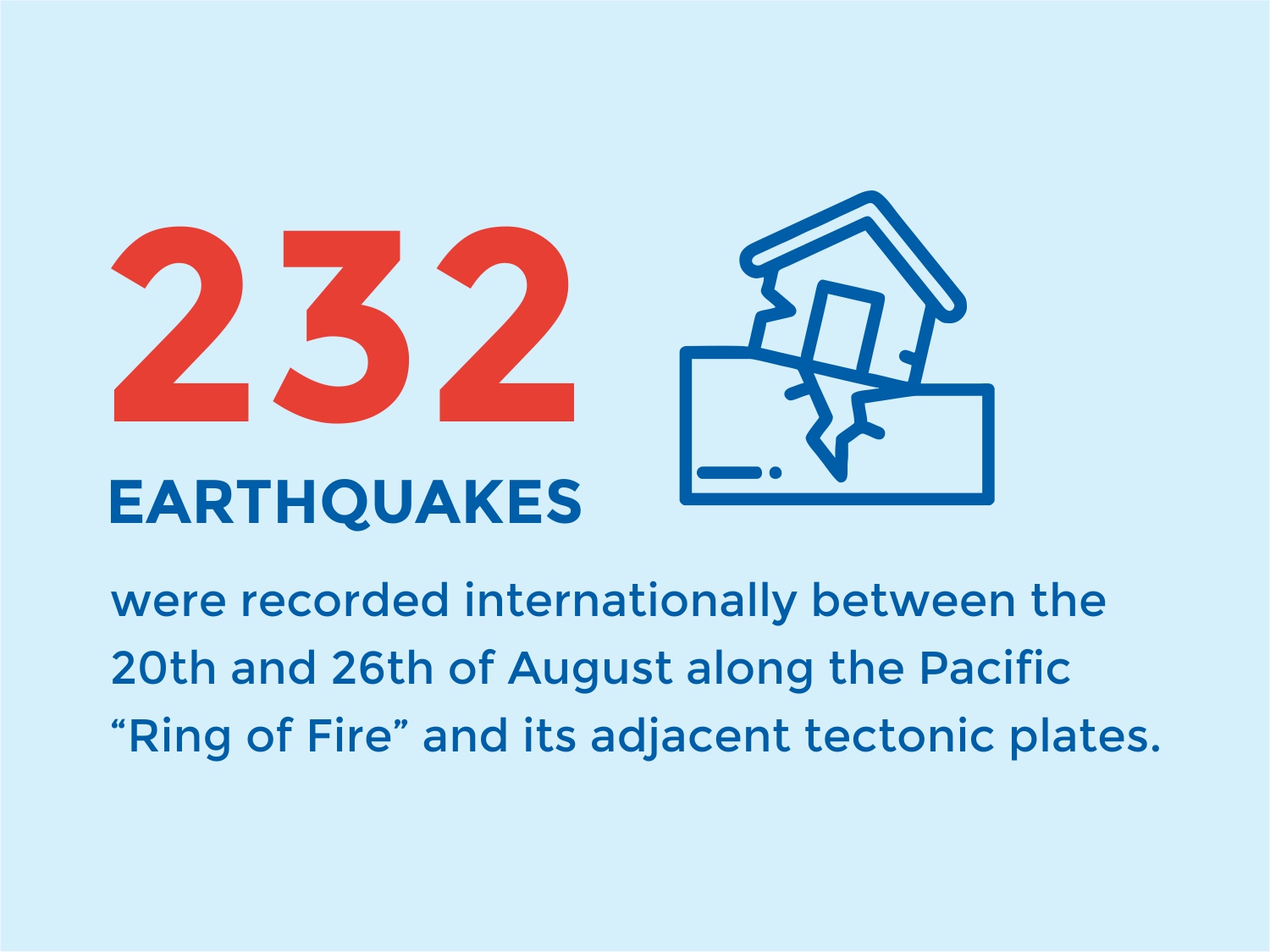
MONTHLY DISASTER REVIEW AND OUTLOOK
JULY & AUGUST | DISASTER MONITORING & ANALYSIS
(DMA) UNIT, AHA CENTRE
GENERAL OVERVIEW OF JULY AND AUGUST 2018
A two-week period in July saw the development of 5 tropical storms, one of which had a severe affect on the northern ASEAN region. The Southwest monsoon (refer to figure 1.) brought with it heavy torrential rains, resulting in flooding through the Mekong River region. Hydro-meteorological disasters formed the main hazards during this period, and are expected to persist with continued rain over the northern ASEAN region, coupled with drier conditions in southern part of ASEAN.
In contrast to the situation in the northern ASEAN region, droughts in 16 municipalities have been reported across seven consecutive weeks thus far, with one reported wildfire occurrence in the past month. The ASEAN Specialised Meteorological Centre detected hotspots in Indonesia’s Kalimantan and Sumatra during July. General conditions for August remained similar to July, with high rainfall experienced over the northern region, impacting countries in the Mekong region and northern parts of the Philippines.
Throughout the last 2 months, large numbers of earthquakes were recorded and experienced by ASEAN communities. The increased seismic activity is not only restricted to the region,with the phenomenon also seen globally. A total of 232 earthquakes were recorded internationally between the 20th and 26th of August along the Pacific “Ring of Fire” and its adjacent tectonic plates. Of these recorded earthquakes, 37 (15.9%) were recorded at a scale of M 5.0 or above, with 25 (67.6%) of these major earthquakes (≥M 5.0) occurring within a span of 48 hours between August 20th to 22nd. Of these 232 earthquakes, 32 (13.8%) were reported within the ASEAN region. Of the 32 recorded in the region, 11 (34.4%) were reported to be M 5.0 and above. The increasing seismic activity is currently being observed by seismological agencies in anticipation of increased volcanic activity, earthquakes, tsunamis and other related hazards. Nevertheless, in July and August 2018, activity of volcanoes in Philippines and Indonesia stayed within their normal threshold, with no changes in any of their alert levels
The prevailing Southwest Monsoon season is expected to persist until October 2018, with prevailing winds in the region blowing from the southeast or southwest. Climatologically, the Southwest Monsoon season is characterised by rainy conditions in the northern ASEAN region, and dry conditions in the southern ASEAN region.
OUTLOOK FOR AUGUST-OCTOBER 2018
Warmer than average conditions can be expected over the equatorial ASEAN region, especially in Borneo and south-eastern Sumatra, while near-average or slightly above-average temperatures are forecasted over most other areas during the August-October season.
For the equatorial ASEAN region, below-average rainfall is forecasted between August and October. The drier-than-usual weather could to lead to an escalation in hotspot activities and an increased risk of transboundary smoke haze.
Near-average rainfall is forecasted for the rest of the region, including the northern ASEAN region. Hotspot activities in the northern ASEAN region are likely to remain subdued due to wet weather. The outlook is assessed for the region in general. For specific updates on the national scale, the relevant National Meteorological and Hydrological Services as well as Geological Services should be consulted.
Written by : Mizan Bisri, Qing Yuan Pang
DISCLAIMER
AHA Centre’s estimation is based on data and information shared by National Disaster Management Organisations (NDMOs) and other relevant agencies from ASEAN Member States, international organisations and news agencies. Further information on each recorded-significant disaster, description and details of data and information are available at: http://adinet.ahacentre.org/reports.

